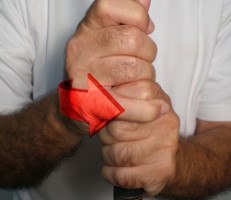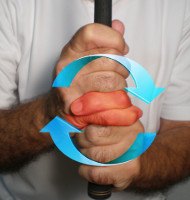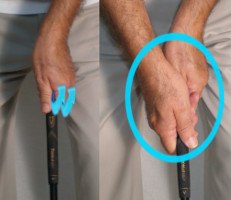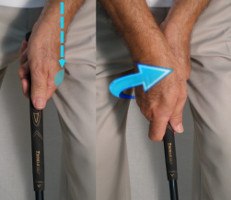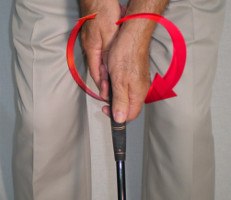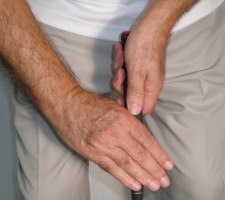Pros and Cons of Every Golf Grip Style |
Best Grip? Overlapping vs Interlocking |
Grip style: Interlocking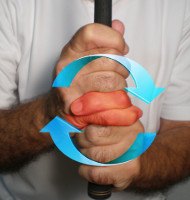 |
Hand position: Neutral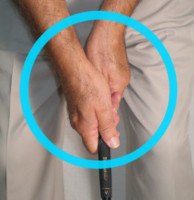 |
Putting grip style / hand position: Reverse overlap / neutral left hand, strong right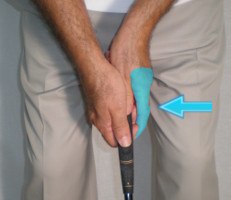
|
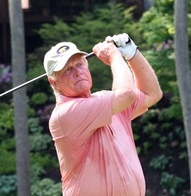
Why do so many golfers use the interlocking grip method? Because that’s how they saw Jack Nicklaus grip the club.
Nicklaus adopted the interlocking style because that’s what his teacher, Jack Grout, taught him. Obviously, it served the Golden Bear well – he won 18 professional majors with it. Nicklaus has said he likes the sense of security and unity the interlocking technique provides. He also believes it helps keep the hands on the club at the top of the backswing, where many golfers lose contact.
While Nicklaus has huge thighs, shoulders and forearms, his hands are relatively small. In fact, many instructors encourage small-handed golfers, including women and juniors, to go with the interlocking style.
Nicklaus’ mammoth drives and towering irons are legendary, but he’s equally famous as one of the game’s greatest clutch putters. Like many players of his era, including Arnold Palmer, Nicklaus built his stroke on the slower greens of the 1950s and ’60s. Thus, it’s more of a popping action than a smooth, arms-and-shoulders motion.
With the putter, Jack Nicklaus’ grip is a bit odd looking. His left hand is perhaps a touch on the weak side of neutral, but his right hand is much more underneath the handle in a markedly strong position. This made Nicklaus’ right arm dominant in the stroke, whereas most golfers today favor neither arm.
